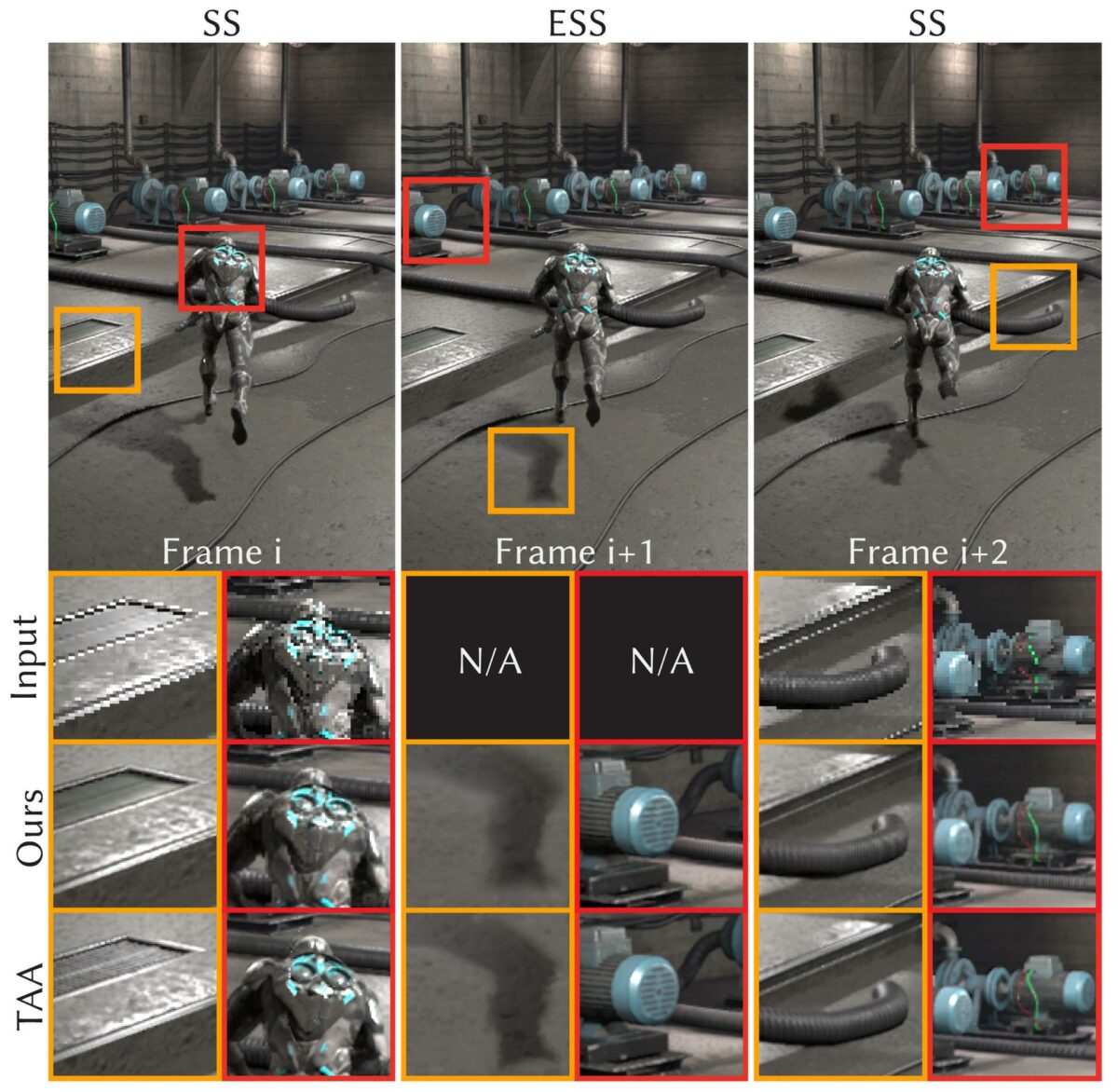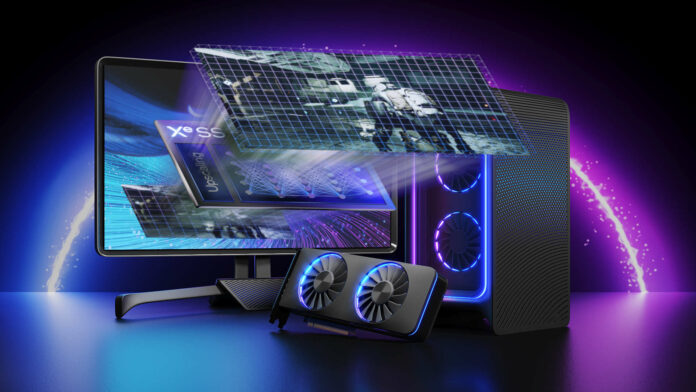Intel has showcased its in-house frame generation technology during SIGGRAPH Asia 2023 in Sydney. The results of Intel ExtraSS are quite interesting, as Team Blue’s approach is a bit different than its competitors.
Following Nvidia DLSS 3 Frame Generation and AMD FSR 3 Fluid Frames, Intel’s ExtraSS uses extrapolation instead of interpolation to generate intermediary frames. Frame interpolation and extrapolation are the two methods used by temporal super-sampling technologies. Usually, frame interpolation provides better results at the expense of higher latency. That’s why Nvidia and AMD both recommend using latency reduction techniques such as Reflex and Anti-Lag.
Frame extrapolation causes less latency but has difficulty handling disoccluded areas. This is due to a lack of information in the input frames. Intel claims its new tool uses a warping method with a lightweight flow model to extrapolate frames with better quality and less latency.
Generated frames already have issues regardless of the chosen path. If Intel manages to make it stable enough, it could become a valuable choice for latency-sensitive users and games.

Since Intel’s demonstration ran on an AMD Ryzen 9 5950X CPU and Nvidia RTX 3090 GPU, ExtraSS seems to be hardware agnostic. Running on all kinds of GPUs, this would encourage developers to integrate this technology into their games.
But that’s not all. Intel recently updates its XeSS technology to improve its image quality. Tested by Hardware Unboxed, XeSS 1.2 delivered better temporal stability and performance. In simpler terms, XeSS Balanced pushed equivalent quality and fps to AMD’s FSR 2 Quality. Better yet, Intel achieved these results using the DP4A version of XeSS, which can run on AMD and Nvidia GPUs. This means it might be able to improve visual quality using the XMX version, exclusive to Intel’s Arc GPUs’ AI accelerators.

